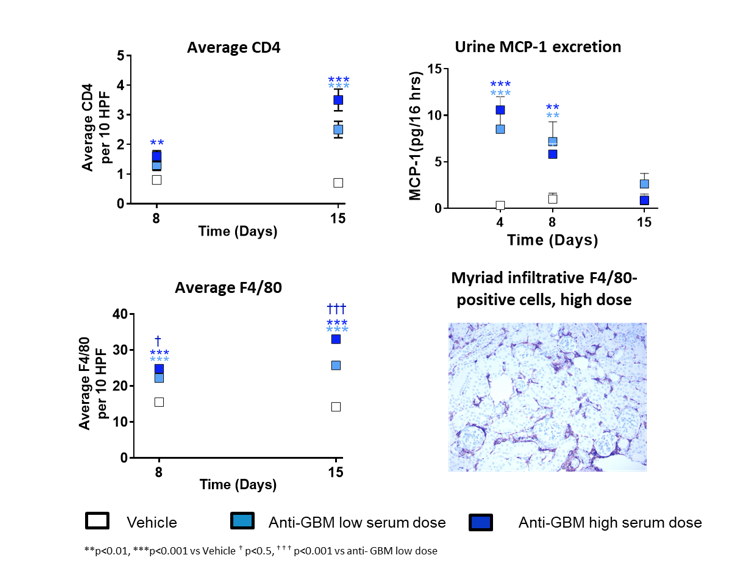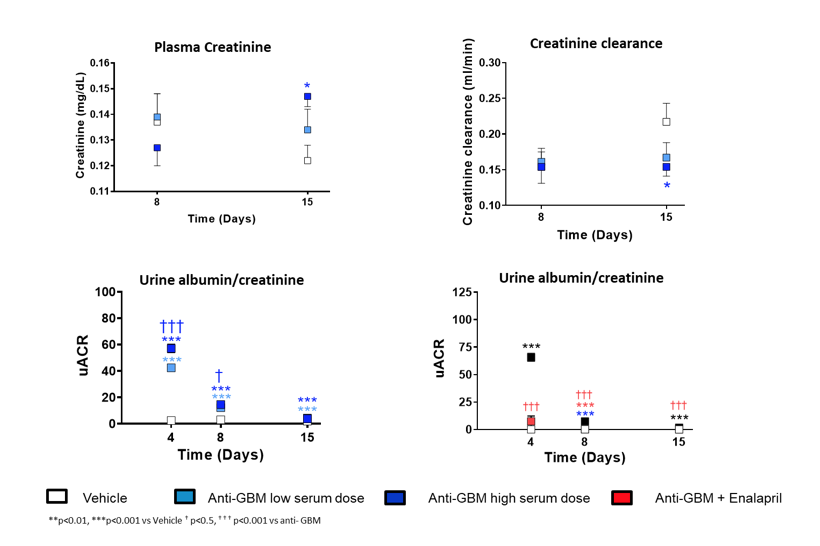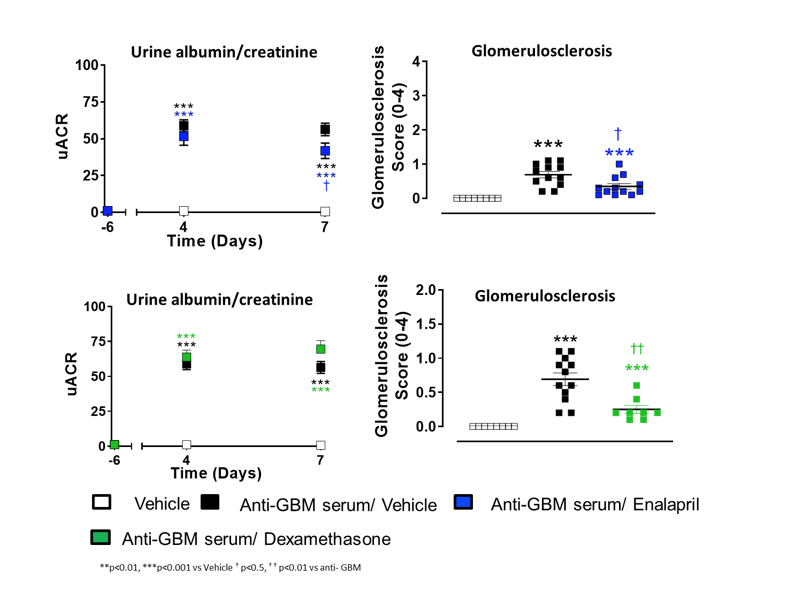Anti-GBM Model of nephrotoxic nephritis and inflammation
Glomerulonephritis (GN) is a group of diseases involving damage to the glomeruli caused by inflammation. We have developed the antibody induced anti-GBM (glomerular basement membrane) rodent model of glomerulonephritis that mimics human GN by rapid onset of inflammatory cell infiltration and proteinuria.
Anti-GBM model is characterised by:
- Rapid onset of inflammatory cell infiltration
- Severe proteinuria
- Plasticity: Enalapril, Empagliflozin and Dexamethasone are effective in rescuing kidney phenotype in this model
Following anti-GBM serum injection, inflammatory cells infiltrate the glomerulus. The inflammatory response is dose dependent.

Antibody deposition on the GBM membrane in the mouse model leads to acute albumin loss into urine that is prevented with Enalapril. Equally, the observed reduction in eGFR resembles features of human CKD.

Antibody deposition on the GBM membrane in the rat leads to severe albuminuria. The structural changes related to inflammation are prevented by Enalapril.

Get in touch for more information or browse our models of fibrosis and inflammation
